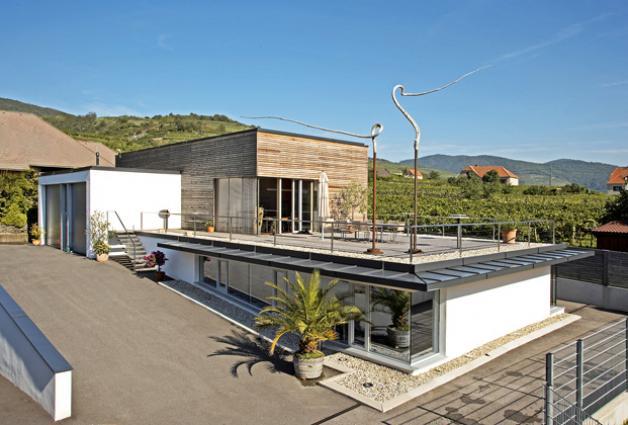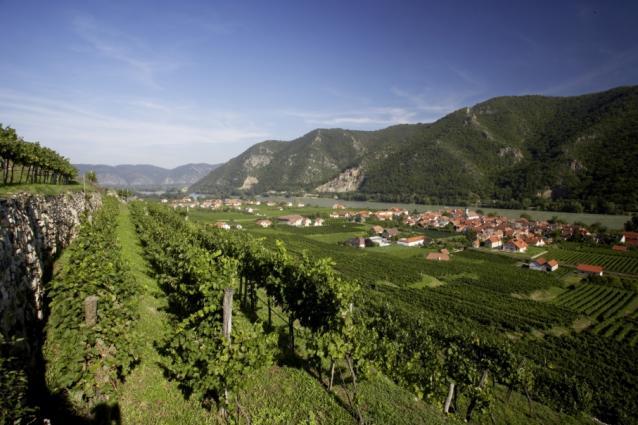Rudi Pichler
Riesling Terrassen Smaragd
Rudi Pichler
Riesling Terrassen Smaragd
Rudi Pichler is among the elite growers of the Wachau producing wines of precision, power, and longevity. Grüner Veltliner and Riesling make up 95% of the production with the remaining 5% shared between Weißburgunder and Roter Veltliner. Rudi Pichler belongs to the prestigious Vinea Wachau and vinifies under the strict parameters of their codex.
Yields are kept low between 30 and 35 hectoliters per hectare with botrytis carefully removed by hand. Grapes are crushed by foot and receive between three and 36 hours of maceration on the skins. Vinification is entirely in stainless-steel tanks and malolactic fermentation is avoided.
Weingut Rudi Pichler consists of 37 acres spread between Wösendorf, Joching, and Weißenkirchen where south-facing terraces look down at the Danube River. Terrassen indicates it is a cuvée from multiple terraced sites. Smaragd is a term used by Vinea Wachau members indicating a dry wine with a minimum alcohol of 12.5%.
Tasting Notes
Wachau Riesling is dry and often defined by high levels of dry extract (due to a lengthy ripening period) and a pleasing freshness (due to dramatic temperature swings between day and night). Soils of primary rock from various terraced sites give this dry Riesling subtle minerality accompanied by aromas and flavors of citrus and stone fruit.
Food Pairing
Riesling’s high acidity makes it one of the most versatile wines at the table. Riesling can be used to cut the fattiness of foods such as pork or sausages and can tame a certain amount of saltiness. Conversely, it can highlight foods such as fish or vegetables in the same way a squeeze of lemon or a vinaigrette can.
Rudi Pichler is among the elite growers of the Wachau producing wines of precision, power, and longevity. Grüner Veltliner and Riesling make up 95% of the production with the remaining 5% shared between Weißburgunder and Roter Veltliner. Rudi Pichler belongs to the prestigious Vinea Wachau and vinifies under the strict parameters of their codex.
Yields are kept low between 30 and 35 hectoliters per hectare with botrytis carefully removed by hand. Grapes are crushed by foot and receive between three and 36 hours of maceration on the skins. Vinification is entirely in stainless-steel tanks and malolactic fermentation is avoided.
Weingut Rudi Pichler consists of 37 acres spread between Wösendorf, Joching, and Weißenkirchen where south-facing terraces look down at the Danube River. Terrassen indicates it is a cuvée from multiple terraced sites. Smaragd is a term used by Vinea Wachau members indicating a dry wine with a minimum alcohol of 12.5%.
Tasting Notes
Wachau Riesling is dry and often defined by high levels of dry extract (due to a lengthy ripening period) and a pleasing freshness (due to dramatic temperature swings between day and night). Soils of primary rock from various terraced sites give this dry Riesling subtle minerality accompanied by aromas and flavors of citrus and stone fruit.
Food Pairing
Riesling’s high acidity makes it one of the most versatile wines at the table. Riesling can be used to cut the fattiness of foods such as pork or sausages and can tame a certain amount of saltiness. Conversely, it can highlight foods such as fish or vegetables in the same way a squeeze of lemon or a vinaigrette can.







